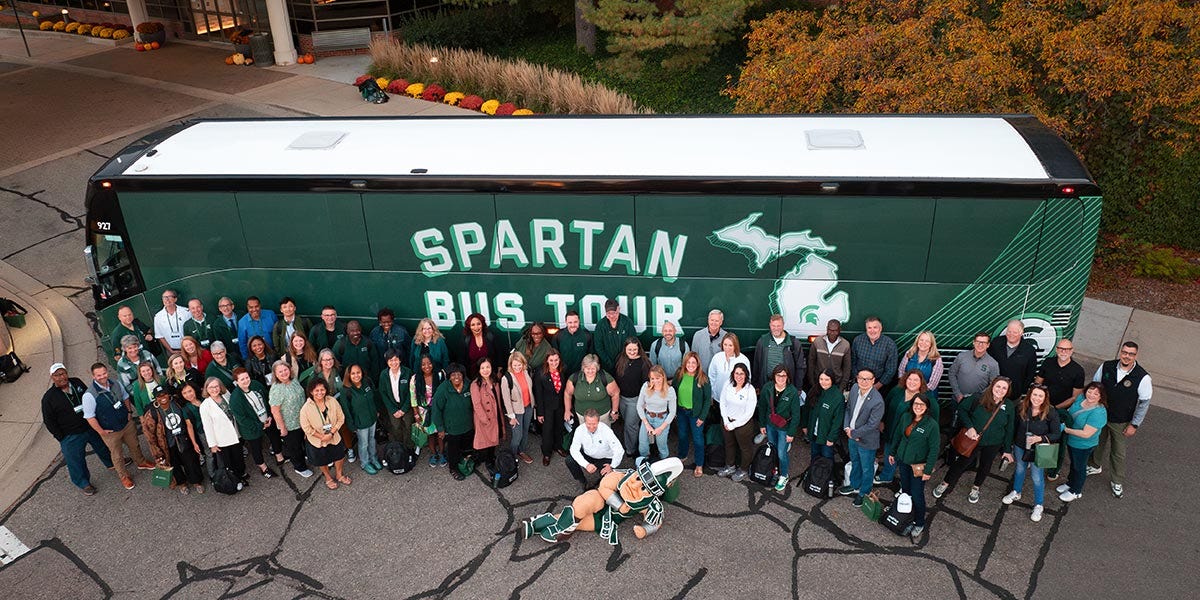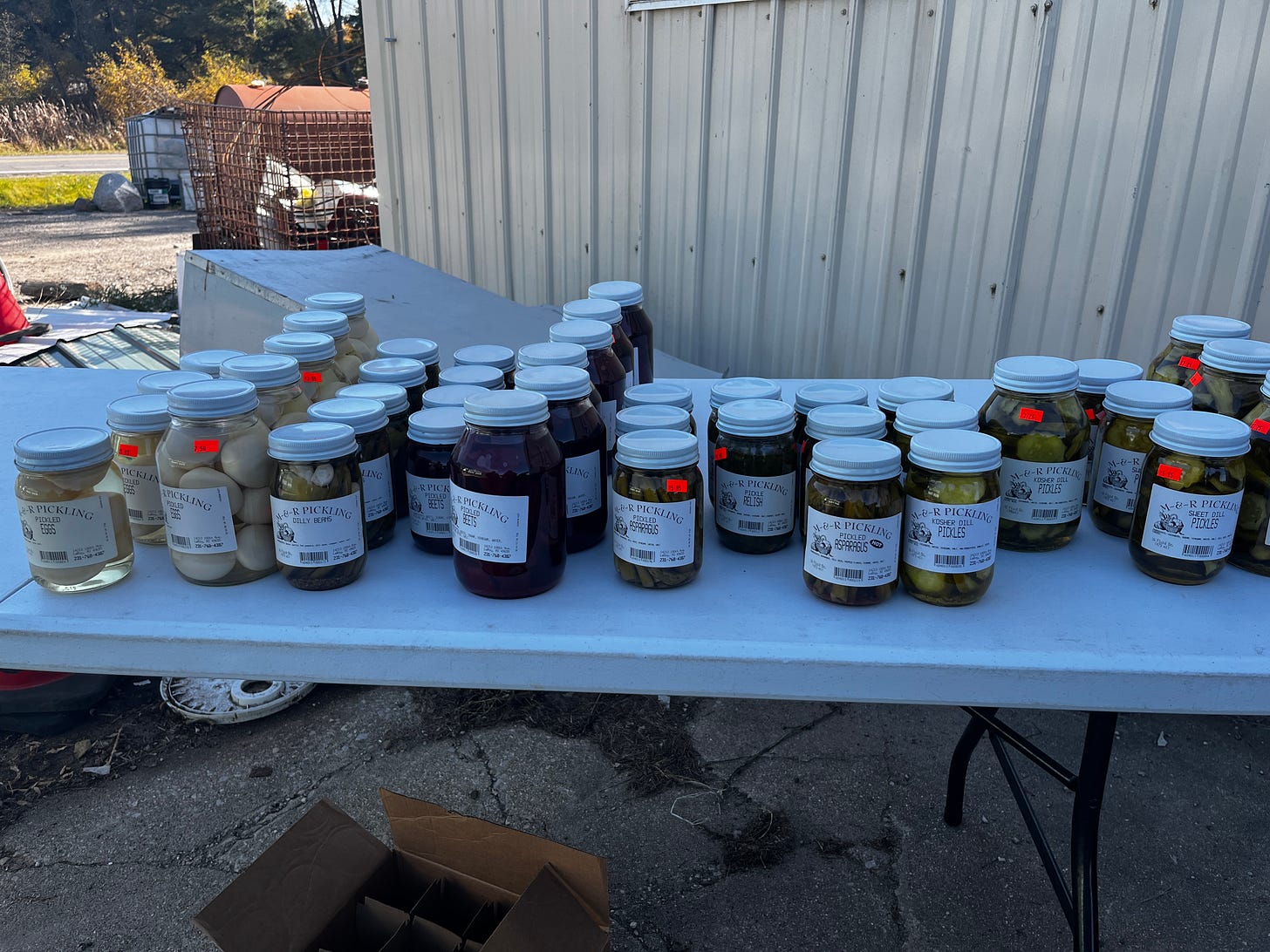Taking a slight detour from telehealth, I wanted to share reflections on my experience with Michigan State University’s inaugural Spartan Bus Tour. This trip, led by President Guskiewicz and attended by faculty and administrators, showcased MSU’s far-reaching impact across Michigan. From the western Lower Peninsula to rural and urban areas alike, each stop emphasized our dedication to education, research, and community outreach. It was incredible to witness firsthand the ways in which MSU supports local economies, addresses public health challenges, and fosters cultural connections.
A profoundly meaningful stop was when, for the first time in MSU’s 169-year history, a university president stood with the Chief of the Anishinaabe people on their land. This gathering included a ceremonial blanket exchange, a flag ceremony, and powerful drumming by the Onion Creek Drummers. The moment was a testament to MSU’s commitment to honoring and building relationships with Indigenous communities, respecting both the past and present.
The tour offered eye-opening experiences, like meeting with Ruth Yoder, an Amish entrepreneur whose M&R Pickling business has flourished through support from MSU’s Product Center. Hearing her story was a reminder of the entrepreneurial spirit alive in Michigan’s communities and how MSU’s resources can amplify that energy. Other stops, like Camp Grayling and the Kellogg Biological Station, revealed MSU’s role in conservation and environmental research, which go beyond academics to have a direct impact on Michigan’s natural resources.
A particularly poignant moment was visiting Rockford, a seemingly idyllic town grappling with PFAS contamination. Meeting residents affected by this issue, I was struck by their strength and the lingering questions about long-term health impacts. It reinforced the importance of MSU’s partnerships in public health and environmental remediation, working to address critical issues affecting our communities.
Another highlight was meeting students from migrant farmworker backgrounds in MSU’s High School Equivalency Program (HEP) and College Assistance Migrant Program (CAMP). Many are first-generation students navigating college, and their resilience and ambition were inspiring. MSU’s commitment to supporting these students, from high school through college, truly underscores our dedication to inclusivity and equal opportunity.
Through this experience, I felt a renewed sense of connection—not only to the people and places we serve but also to my colleagues on the tour. MSU’s commitment is not just to educate but to create lasting change, support local economies, and help shape a healthier, more inclusive Michigan. The trip reminded me that our work is grounded in human connection and community, values that resonate deeply as we move forward together.
***If you want an insight into telehealth in Michigan, see the Research Insights below.
Research Insights
Here is the first article of a series from the Telehealth Think Tank my colleagues and I organized. The event was funded by the Agency for Healthcare Research and Quality. As a group, we examined telehealth's future in a post-pandemic world, using Michigan as a model for national strategies. Key themes included technology, patient equity, and education, with discussions on addressing healthcare gaps and improving telehealth's infrastructure and accessibility. Papers produced from this event offer a roadmap to make telehealth a sustainable and equitable part of healthcare, emphasizing continued interdisciplinary collaboration.
Telehealth in the News
Zoom now powers over a third of U.S. telehealth visits and recently introduced AI-driven transcription with the Suki Platform to reduce doctors’ documentation by up to 70%. While many physicians see AI’s potential to improve efficiency, concerns remain over accuracy and privacy. Zoom joins other tech giants like Microsoft’s Nuance and Amazon’s HealthScribe, which similarly streamline notetaking to enhance clinician-patient interactions and ensure transparency. The trend reflects a broader adoption of AI in healthcare, with nearly 80% of organizations using AI tools.
Let’s keep the conversation going!




